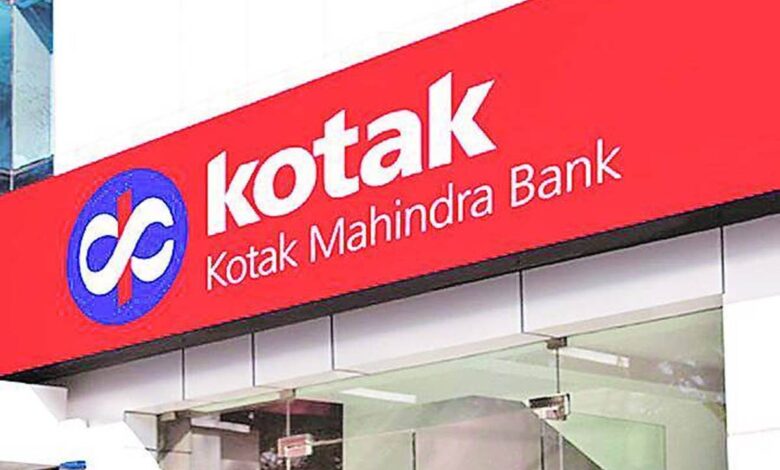Why Kotak Mahindra bank is dangerous for the start-ups and Businesses!

In a recent take on the Kotak Mahindra Bank, RBI imposed penalty of Rs.1.05 crore regarding non-compliance. The Reserve Bank of India (RBI) stated that it has fined Kotak Mahindra Bank Ltd. Rs.1.05 crore for not following the central bank’s guidelines.

The Investigation-
The RBI conducted a Statutory Inspection for Supervisory Evaluation (ISE) of the bank based on its financial status as of March 31, 2018, and March 31, 2019.
The investigation of the risk assessment findings, inspection reports, and all related correspondence revealed a violation of non-compliance with the provisions of this Law and the directions issued by the RBI, to the extent that the bank has been unable to pay the required fund to the Depositor Education and Awareness Fund within the time frame stipulated.
In other situations, the lender also ended in failure to refund (shadow reversal) the money involved in the unauthorized electronic transactions to the consumers’ accounts within 10 working days of the customer’s notice. Adding on, the bank failed to keep or calculate the margin on advances to stock brokers.
The Conclusion-
After observing the bank’s response to the notice and sanctions by the regulator, oral submissions made in the personal hearing, and inspection of additional submissions made by the bank, the RBI concluded that the charges of contravention of non-compliance with the previously stated provisions of the RBI directions were proven true and justified imposition of monetary penalty on the bank.
If you believe this is the first case with such a superb bank, think again! They have a series of such lawsuits looming on the horizon.
1. Dated April 2022, the Kotak Mahindra Bank employee has been detained on accusations of ‘cheating.’
Alankar Khare, the bank’s loan officer, was identified in the case. The bank dismissed all of the charges against the organization considering them false. The bank described all of the charges as false and rejected all of the claims made against the organization, saying that the bank has always been acting by the rules and regulations.
Other bank personnel mentioned in the FIR include Willey Fernandes, Samprad Kamat, Ambar Darbari, Pramod Krupal, Alankar Khare, and Abhijeet Magar, as well as the bank’s Head, Uday Kotak.
According to the victim, Ashok Purohit, he took a bank loan in 2013. He claimed that the bank cheated and forged documents using his signatures and rubber stamps to change the title of his loan from Lease Rental Discounting (LRD) to Loan against property (LAP) with a higher interest rate of 12 % instead of the agreed 10.3 %, causing the borrower financial loss and mental stress.
When he became aware of the fraudulent conduct in 2018, he approached the EOW. The EOW then conducted a preliminary investigation into the subject, finding that fake signatures had been produced by the bank.
2. Dated June 2019, RBI imposed penalty of 2 crore on the private sector lender Kotak Mahindra Bank for failing to provide information on promoter holdings.
The RBI asked the bank to provide information on the shareholding held by its promoters as well as details of the bank’s intended course of action/plans/strategy for compliance with the authorized schedule for dilution of promoter shareholding. Following that, the bank was required to prove its commitment to achieving the dilution within the timeframes specified.
However, the bank failed to follow both of these instructions.
According to the RBI’s banking license guidelines, a promoter’s ownership in the bank should be reduced to 40% after three years of operation, 20% within ten years, and 15% within fifteen years. Following these guidelines, Kotak proposed issuing non-convertible perpetual non-cumulative preference shares at Rs 5 each, for a total of Rs 500 crore. This reduces the promoter share to 19.7 %. However, the RBI rejected this, stating that preference shares are not part of the promoter’s fundamental shareholding and that preference shares will enable promoters to keep voting rights.
3. Dated February 2019, The RBI imposed penalty of Rs. 20 lakh on Kotak Mahindra Bank for failing to comply with various RBI directives on Know Your Customer (KYC) norms / Anti-Money Laundering (AML) standards.
RBI imposed penalty under RBI’s powers stated in Section 47A(1)(c) read with Section 46(4)(i) of the Banking Regulation Act, 1949, in light of the above banks’ failure to comply with the above RBI orders.
Opinion
The Kotak Bank staff has been implicated in wrong selling of banking/loan products, miscommunication on T&C’s, and behaving shamelessly in clear violation of both the Bank’s and the RBI’s laid down norms and regulations. Multiple escalation attempts to managers, senior management, grievance offices, and nodal personnel have gone unanswered. Multiple emails and letters have resulted in no response. Ordinary borrowers, like us, generally lack the money and bandwidth to take on the power of the bank, allowing them to walk free.

Light at the end of the tunnel
RBI must have its police station where offending bank executives are punished to the third degree. Why people’s money is used as a penalty for the punishment every time???




